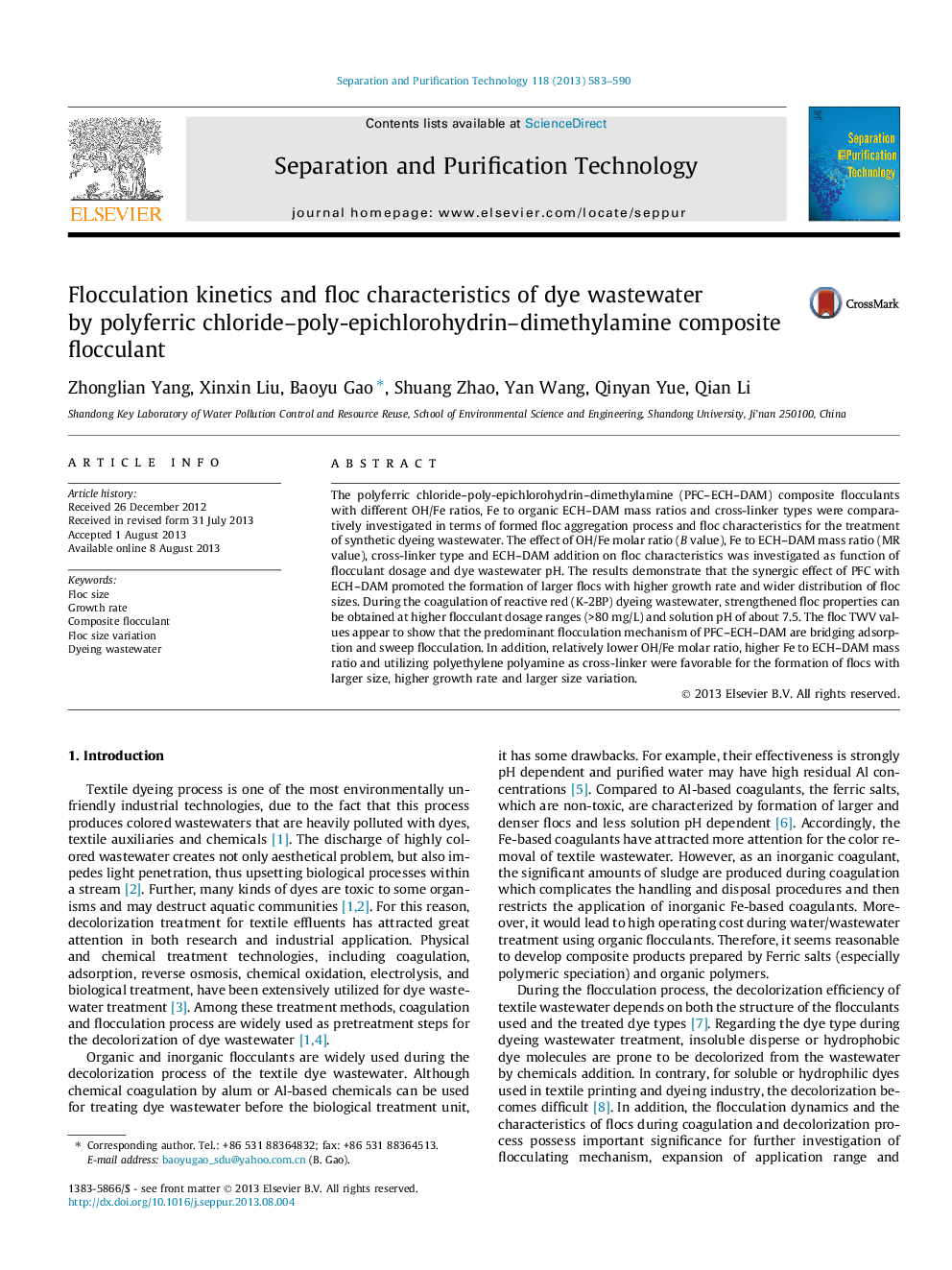| Article ID | Journal | Published Year | Pages | File Type |
|---|---|---|---|---|
| 641541 | Separation and Purification Technology | 2013 | 8 Pages |
•Novel composite flocculant was made by PFC and DAM–ECH for dye wastewater treatment.•PFC–DAM–ECH provides good floc feature with polyethylene polyamine as cross-linker.•Low B value and high MR value are beneficial to better settlable floc formation.•Synergic effect promoted large size, high growth rate and wide size distribution.•The TWV values were highly and directly related to coagulation mechanism.
The polyferric chloride–poly-epichlorohydrin–dimethylamine (PFC–ECH–DAM) composite flocculants with different OH/Fe ratios, Fe to organic ECH–DAM mass ratios and cross-linker types were comparatively investigated in terms of formed floc aggregation process and floc characteristics for the treatment of synthetic dyeing wastewater. The effect of OH/Fe molar ratio (B value), Fe to ECH–DAM mass ratio (MR value), cross-linker type and ECH–DAM addition on floc characteristics was investigated as function of flocculant dosage and dye wastewater pH. The results demonstrate that the synergic effect of PFC with ECH–DAM promoted the formation of larger flocs with higher growth rate and wider distribution of floc sizes. During the coagulation of reactive red (K-2BP) dyeing wastewater, strengthened floc properties can be obtained at higher flocculant dosage ranges (>80 mg/L) and solution pH of about 7.5. The floc TWV values appear to show that the predominant flocculation mechanism of PFC–ECH–DAM are bridging adsorption and sweep flocculation. In addition, relatively lower OH/Fe molar ratio, higher Fe to ECH–DAM mass ratio and utilizing polyethylene polyamine as cross-linker were favorable for the formation of flocs with larger size, higher growth rate and larger size variation.
